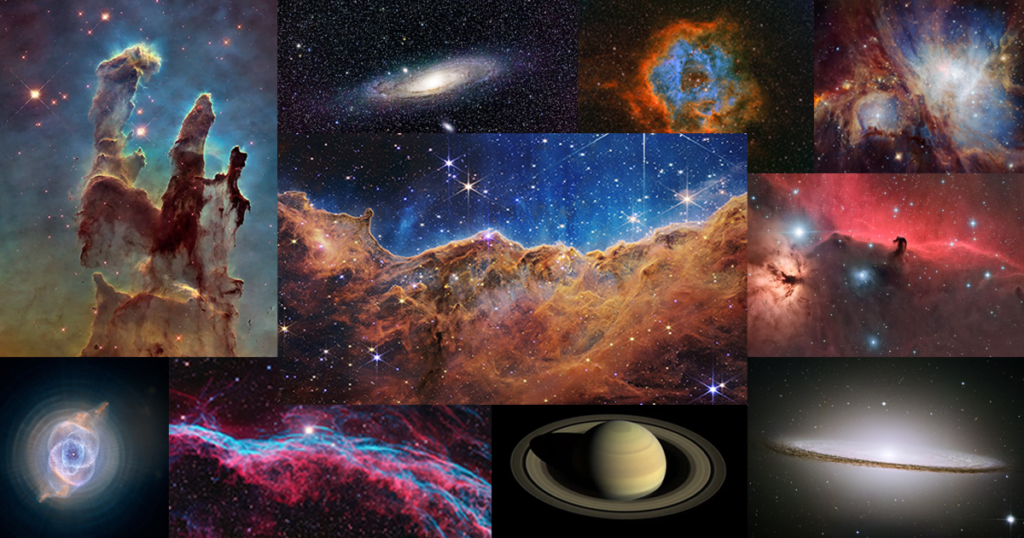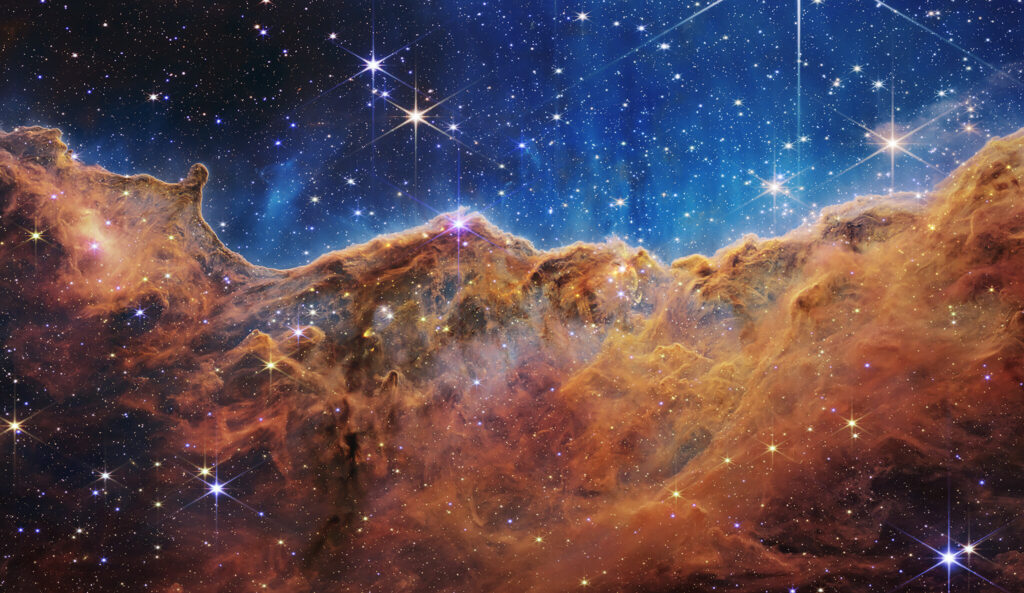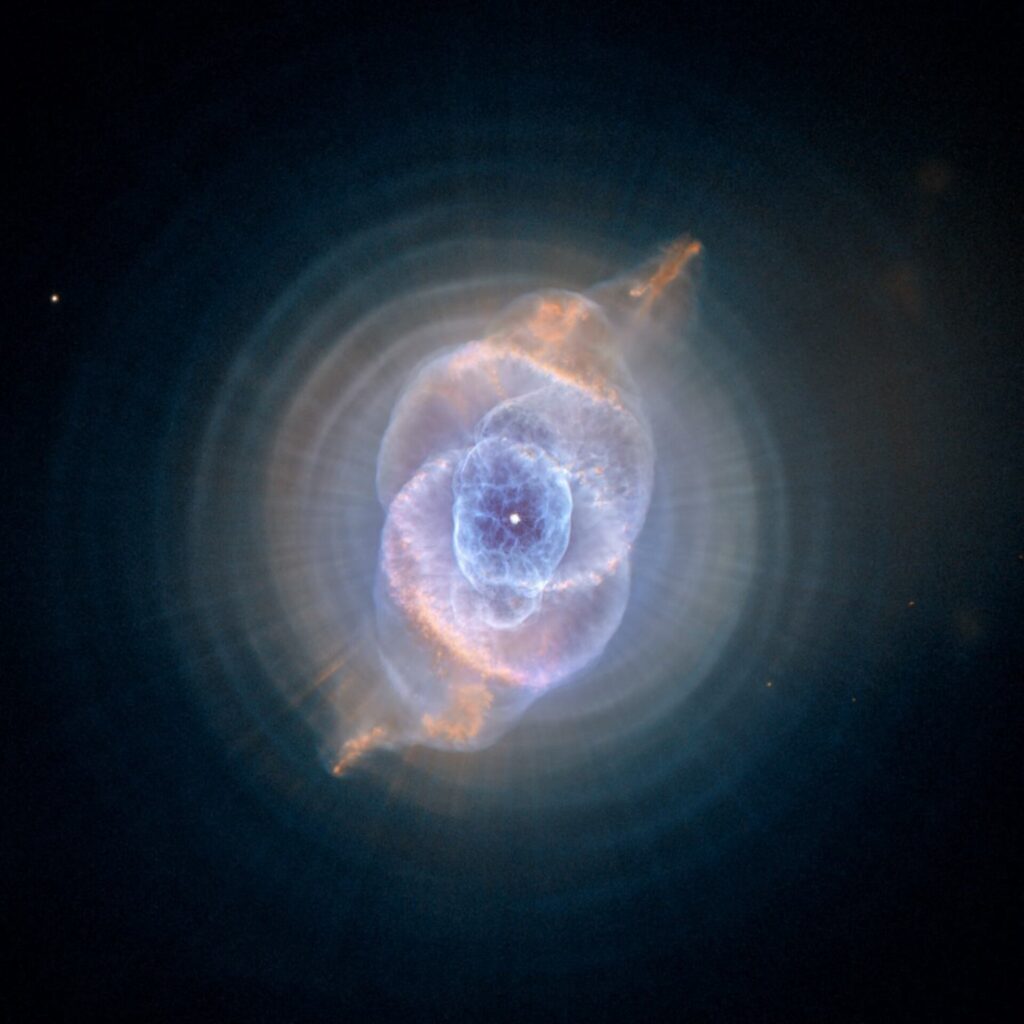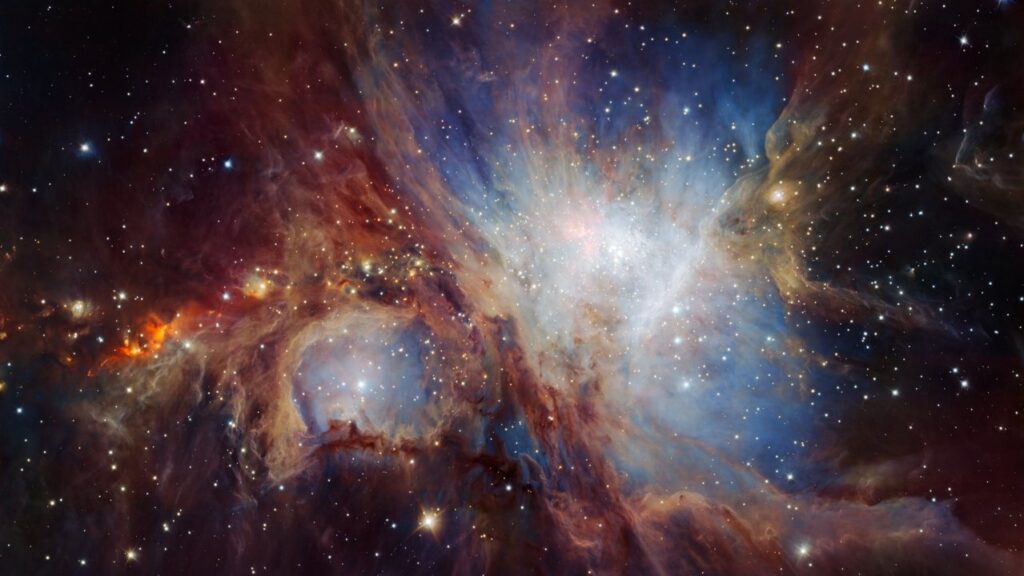There are many incredible space photos, new photos are taken daily by thousands of people from Earth and telescopes located in space. To avoid the having to find great pictures among millions, I have created this post, where I have included the 10 most breathtaking space photos. I have also decided to include short explanations to every image, in order to add some context.
10 Best space photos

Pillars of Creation
This image, taken by the Hubble Space Telescope in 1995, shows towering columns of gas and dust within the Eagle Nebula (M16). The “pillars” are regions where new stars are being born, and the image highlights the dense clouds of gas and dust illuminated by nearby stars. The columns are part of a larger star-forming complex, with the vibrant colors resulting from different elements emitting light at various wavelengths. The pillars are about 5 light-years in length, while the whole nebula is about 75 light-years big and, 7000 light-years away from Earth.
The Pillars of Creation offer a glimpse into stellar nurseries and the processes involved in star formation, showcasing the raw beauty of cosmic creation.

Carina Nebula
Captured by Hubble in 2004, this image of the Carina Nebula (NGC 3372) shows a massive star-forming region located about 7500 light-years away. The nebula features enormous pillars of gas and dust, as well as bright young stars that illuminate and sculpt the surrounding material. The image is notable for its depth and the rich variety of structures visible within the nebula, which is 460 light-years in diameter.
The Carina Nebula is one of the largest and most active stellar nurseries known, and the image provides valuable insights into the processes of star formation and the interactions between young stars and their environment.

Andromeda Galaxy
Also known as M31, the Andromeda Galaxy is the nearest spiral galaxy to the Milky Way, located about 2.5 million light-years away. The image reveals its spiral structure, which measures 260000 light-years across, with a bright central bulge and sprawling arms filled with stars and nebulae. The galaxy’s sheer size and detail make it a spectacular sight.
The Andromeda Galaxy provides a crucial comparison to our own Milky Way, offering insights into the structure and evolution of spiral galaxies.

Rosette Nebula
This image reveals the Rosette Nebula (NGC 2237), a large, circular nebula about 4500 light-years away from Earth, in the constellation Monoceros. The nebula’s shape is defined by a dense cluster of young stars at its center, which have carved out a cavity in the surrounding gas and dust, which measures 130 light-years in diameter. The nebula’s colorful structure is due to emission lines from hydrogen and other elements.
The Rosette Nebula is a key example of how new stars shape and influence their surrounding environment, and the image captures the complexity of the nebula’s structure and the ongoing processes of star formation.

Sombrero Galaxy
This spiral galaxy, also known as M104, is located about 28 million light-years away in the constellation Virgo. The image captures its distinctive shape, which measures 50000 light-years across, with a bright, densely packed nucleus and a prominent dust lane encircling the galaxy. The contrast between the bright core and the dark, dusty ring makes the galaxy resemble a sombrero hat.
This detailed view of the Sombrero Galaxy provides insight into the structure of spiral galaxies and the processes occurring in their central regions.

Horse-head Nebula
Located in the constellation Orion, 1375 light-years away, the Horsehead Nebula (Barnard 33) is a dark nebula that appears as a horse’s head silhouette against a bright backdrop of ionized gas. The image showcases the dense, dark dust cloud which has a diameter of 13 light-years, blocking the light from the background emission nebula, creating a striking contrast.
The Horsehead Nebula is a prominent feature in the Orion Molecular Cloud Complex and serves as a classic example of dark nebulae, which are regions where star formation is occurring but is obscured by dust.

Cat’s Eye Nebula
This planetary nebula (NGC 6543) is located about 3000 light-years away in the constellation Draco. The image reveals a complex structure of concentric shells of gas, with intricate patterns and colors. The central star is the source of the intense radiation that ionizes the surrounding gas, which measures 0.2 light-years, it is a relatively small nebula compared to others in our universe.
The Cat’s Eye Nebula is a prime example of the final stages of stellar evolution for medium-sized stars, showing the dramatic end-of-life phases and the creation of complex nebular structures.

Veil Nebula
This image shows the remainings of a supernova explosion in the constellation Cygnus. The Veil Nebula is a complex and intricate structure of gas and dust expelled by the supernova, the nebula is 110 light-years across and 1500 light-years away from Earth. The Hubble image reveals delicate filaments and knots of gas in shades of blue, pink, and red, with intricate patterns resembling wispy strands.
The Veil Nebula offers an example of the aftermath of a stellar explosion, showcasing the dynamic and colorful remnants that contribute to the cosmic landscape.

Orion Nebula
The Orion Nebula (M42) is one of the most studied and photographed nebulae, located about 1300 light-years away in the constellation Orion. The image captures the bright and dense region of the nebula, with new stars forming from the surrounding gas and dust. The nebula’s bright central region and surrounding complex structures make it a fascinating and beautiful sight, that expands across 24 light-years.
The Orion Nebula is a nearby stellar nursery and an excellent laboratory for studying the processes of star formation and the interactions between young stars and their environment.

Cassini’s Image of Saturn’s Rings
This image, taken by the Cassini spacecraft in 2006, shows Saturn’s rings backlit by the Sun, creating a dramatic and ethereal view. The details of the ring structure are visible, along with the planet’s shadow and the faint ring particles illuminated by sunlight.
The backlit view of Saturn’s rings reveals their delicate structure and provides a unique perspective on one of the most iconic features in our solar system. The image highlights the beauty of Saturn’s ring system and the dynamics within it.

Conclusion
As you can tell, there are many lovely space photos, a combination of colors, chaos, and simplicity make these space photos appealing to everyone.
These are the best 10 space photos ever taken in my opinion. I have also decided to include as much variety as possible, but I do not doubt that you will eventually create your own rank which may strongly differ from mine.
I also want to point out the difficulty of creating a rank for best space photos based entirely on my own opinion. Overall I think I have added great images which hopefully you have loved looking at as much as I have enjoyed creating this post.
